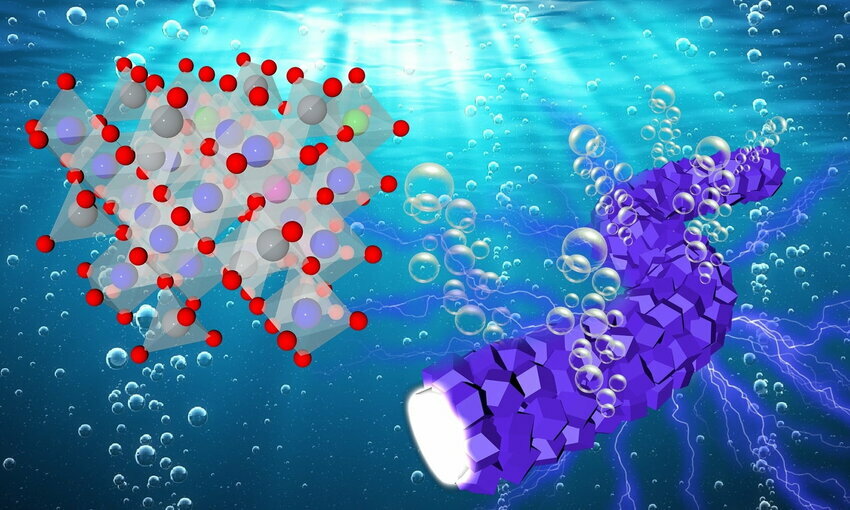 (Credit: Argonne)
(Credit: Argonne)A DOE team from Argonne National Laboratory has created a low-cost way to produce environmentally sustainable hydrogen from water.
Hydrogen is a valuable clean energy source that may be used to decarbonize industry and allow for pollution-free transportation.
Argonne’s newly developed catalyst, composed of elements generously supplied by the Earth, uses proton exchange membrane electrolyzers (PEM), that split water into hydrogen and oxygen efficiently at room temperature. Unlike other hydrogen production methods, less energy is needed in this new process, so renewable sources such as wind and solar may be used.
One obstacle to the PEM technology lies in the current market cost for iridium, which is needed in its oxygen-forming anode catalyst. Iridium costs about $5,000 an ounce, so the lack of supply and its high cost act as the largest barriers to adopting the new technology. The main ingredient of the new catalyst, however, is cobalt, a considerably cheaper material.
“By using the cobalt-based catalyst prepared by our method, one could remove the main bottleneck of cost to producing clean hydrogen in an electrolyzer,” said Di-Jia Liu, senior chemist at Argonne. “Our results establish a promising path forward in replacing catalysts made from expensive precious metals with elements that are much less expensive and more abundant.”
When Giner recently evaluated the new catalyst by using PEM electrolyzer test stations, the performance and durability of the technology greatly exceeded that of competitors’ catalysts.
This project is part of DOE’s Hydrogen Energy Earthshot Initiative, which aims to lower green hydrogen’s cost to $1 per kilogram within a decade. The plan also establishes a framework to implement clean hydrogen in steel manufacturing, clean ammonia, energy storage, and heavy-duty trucks, among other industries.
The Energy Earthshots program also aims to help quickly reach the Biden-Harris Administration’s goal of net-zero carbon emissions by 2050.